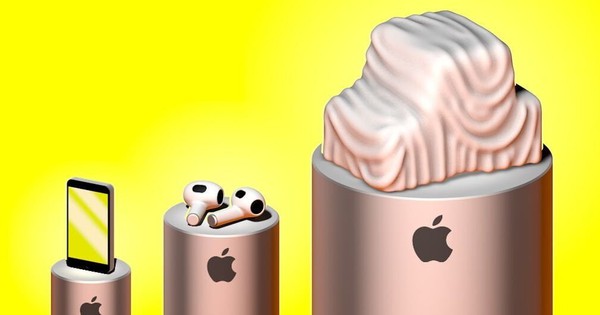The Rise and Fall of Apple’s Project Titan
Apple, the tech giant known for its innovative products, had embarked on a grand venture in the automotive industry. The ambitious project, known as Project Titan, aimed to create a revolutionary self-driving car. However, after years of development and numerous setbacks, Apple recently announced the discontinuation of Project Titan. Let’s delve into the rise and fall of this exciting endeavor.
A Visionary Dream
In early 2020, top executives from Apple gathered at an old Chrysler test track in Wittmann, Arizona. They were there to test the latest prototype of a small white truck, codenamed “Bread Loaf.” This futuristic vehicle was designed to seat four people comfortably and take inspiration from Volkswagen’s microbus. With plans to introduce it to the market in around five years, Apple envisioned a car equipped with a massive TV screen, powerful sound system, and customizable tinted windows. The interior resembled that of a private plane, allowing passengers to transform seats into beds. The most significant feature of the Bread Loaf was its revolutionary Level 5 autonomous driving, which required no human intervention.
A Bumpy Road
Despite the initial excitement, the project faced numerous challenges. Doug Field, the head of the Apple car project, acknowledged that there was still much work to be done before the self-driving technology could function reliably in the real world. The project’s leadership disagreed on whether the car should aim for Level 3 or Level 5 autonomy. Eventually, Field left Apple, and Kevin Lynch took over, continuing the design development.
As the project progressed, Apple explored various designs, including a unique shape reminiscent of a beam and a more conventional SUV design. However, none of these designs, including the Bread Loaf, ever made it into production.
A Costly Endeavor
To bring their automotive vision to life, Apple invested approximately $1 billion annually in the project. This accounted for nearly one-fifth of the company’s research and development budget. Additionally, external groups working on chips, camera sensors, cloud services, and software incurred additional costs in the hundreds of millions of dollars.
A Failed Journey
Despite their ambitious efforts, Apple never came close to realizing their initial vision or any subsequent ones. They never progressed beyond testing full-scale prototypes on public roads, a significant challenge given the complexities of autonomous driving and the economic uncertainty in the automotive industry. At the highest levels of the company, the project was deemed a failure.
A Lack of Leadership and Direction
Many factors contributed to Project Titan’s downfall. Some employees viewed the endeavor as lacking innovation and direction, ultimately prolonging its duration. Apple’s CEO, Tim Cook, and other executive members had differing opinions on the project’s goals, with some pushing for complete autonomy at Level 5. Internal conflicts and disagreements hindered progress throughout the project’s lifecycle.
The Search for Partnerships
Throughout the project, Apple actively sought partnerships with established automotive companies. They explored potential collaborations and even considered acquiring Tesla, Mercedes-Benz, BMW, Volkswagen, and McLaren Automotive. However, all these opportunities eventually fell through. Apple’s CFO, Luca Maestri, argued that the low-profit margins in the automotive industry would be challenging for the tech giant to overcome.
The End of Project Titan
Ultimately, Apple decided to abandon the project. On February 27, 2,000 Project Titan team members received an email announcing an all-hands meeting the following day. During the meeting, it was revealed that Project Titan would be immediately discontinued. The employees were redirected to other departments within Apple, such as artificial intelligence and software technology, while some faced job cuts. The vision of an Apple car had come to an abrupt end.
Apple’s Future Ambitions
Apple, a company known for its groundbreaking products, has faced challenges in recent years. The iPhone, its flagship product, has seen declining sales, while other products like the Apple Watch and AirPods have struggled to achieve similar success. As Apple searches for its next big breakthrough, it remains uncertain about how to achieve that ambition.
The Legacy of Project Titan
Although Project Titan had promising aspirations, its demise serves as a reminder of the difficulty of breaking into the automotive industry. Apple’s journey illustrates the complexities of designing, producing, and marketing a car, making it a challenging market to disrupt. Despite Apple’s extensive resources and innovative track record, Project Titan ultimately fell short of its goals.
For now, Apple’s focus will likely shift to its core products while continuing to explore new avenues for growth. The dream of an Apple car may remain unrealized, but the company’s unwavering pursuit of innovation guarantees that they will continue pushing boundaries in other industries.

